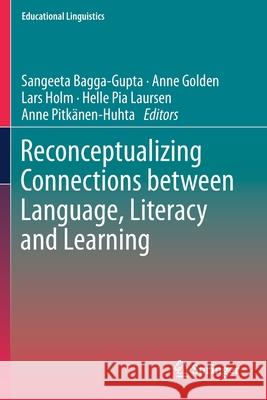Reconceptualizing Connections Between Language, Literacy and Learning » książka
topmenu
Reconceptualizing Connections Between Language, Literacy and Learning
ISBN-13: 9783030269968 / Angielski / Miękka / 2021 / 279 str.
Reconceptualizing Connections Between Language, Literacy and Learning
ISBN-13: 9783030269968 / Angielski / Miękka / 2021 / 279 str.
cena 605,23
(netto: 576,41 VAT: 5%)
Najniższa cena z 30 dni: 578,30
(netto: 576,41 VAT: 5%)
Najniższa cena z 30 dni: 578,30
Termin realizacji zamówienia:
ok. 22 dni roboczych
Bez gwarancji dostawy przed świętami
ok. 22 dni roboczych
Bez gwarancji dostawy przed świętami
Darmowa dostawa!
This edited volume unpacks the familiar concepts of language, literacy and learning, and promotes dialogue and bridge building within and across these concepts. Its specific interest lies in bridging the gap between Literacy Studies (or New Literacy Studies), on the one hand, and SLA and scholarship in learning in multilingual contexts, on the other. The chapters in the volume center-stage empirical analysis, and each addresses gaps in the scholarship between the two domains.
The volume addresses the need to engage with the concepts, categorizations and boundaries that pertain to language, literacy and learning. This need is especially felt in our globalized society, which is characterized by constant, fast and unpredictable mobility of people, goods, ideas and values.
The editors of this volume are founding members of the Nordic Network LLL (Language, Literacy and Learning). They have initiated a string of workshops and have discussed this theme at Nordic meetings and at symposia at international conferences.











